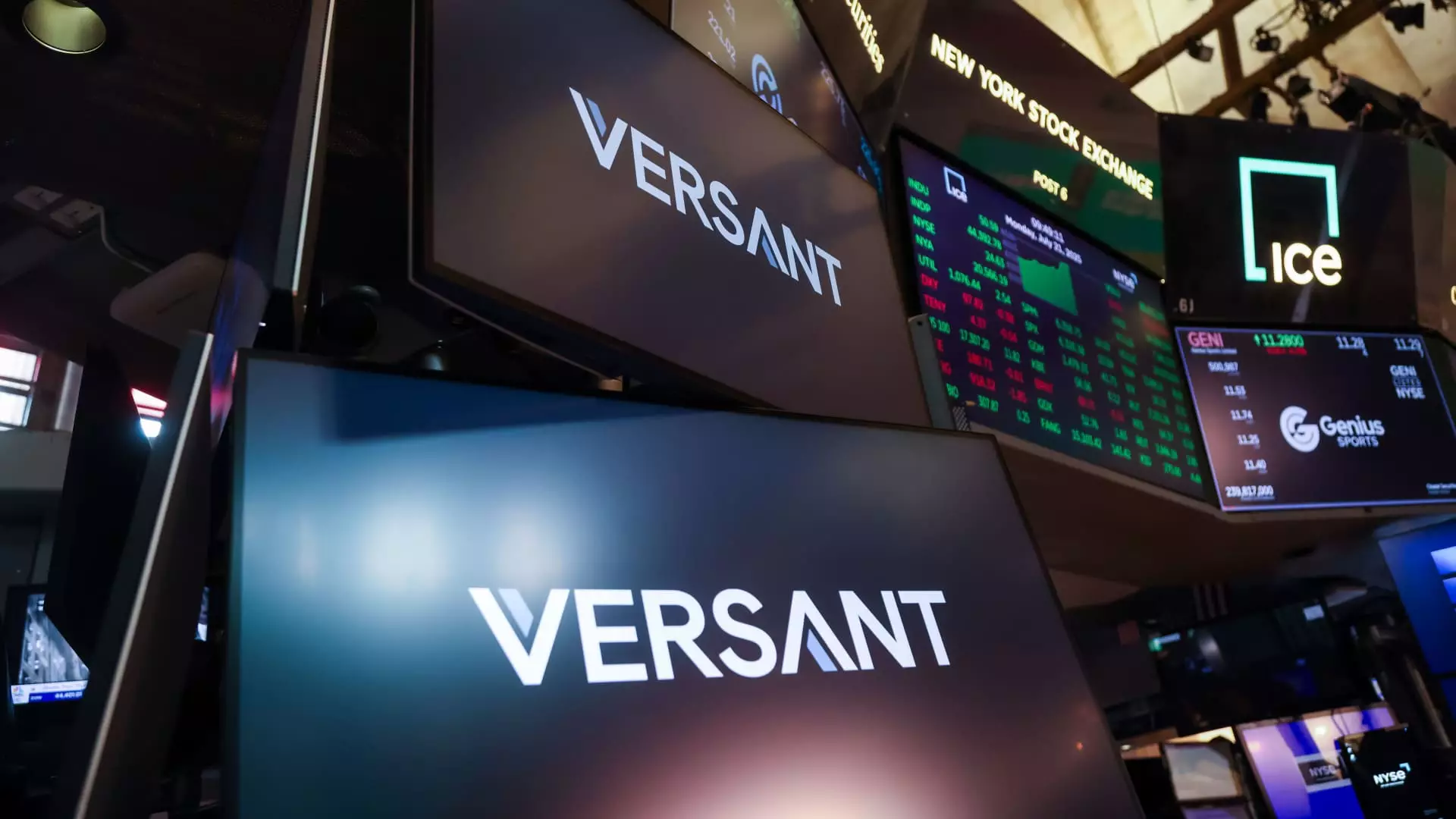In an era where media conglomerates wield unprecedented influence over public perception and culture, the announcement of Comcast’s spinout of its cable networks into Versant signifies more than just a corporate shuffle—it signals a deliberate attempt to recalibrate power structures within the industry. Far from a neutral business maneuver, this move embodies a strategic repositioning aimed at creating a more adaptable, independent entity capable of competing in the fiercely fragmented digital landscape. With a board featuring luminaries from diverse sectors, Versant could transform from a mere portfolio holder into a formidable player wielding new forms of influence, especially as traditional cable networks face inexorable decline.
This strategic split hints at a broader acknowledgment: the old model of centrally-controlled cable dominance is no longer sustainable. Instead, Versant emerges as an aggressive attempt to carve out a niche in digital media, streaming, and tech sectors, leveraging a carefully curated leadership team. It’s a classic case of restructuring not just for financial benefits, but to assert dominance in a shifting terrain where media properties are commodities that can be leveraged for both cultural influence and revenue growth. The real question is whether such a move will serve the public interest or simply recalibrate the balance of corporate power further into the hands of big business.
Leadership That Reflects Broader Industry Trends
The board members of Versant are not merely industry veterans—they are strategic architects with powers rooted in diverse areas such as media, finance, and technology. Mark Lazarus, as CEO, embodies a commitment to legacy media, but his rhetoric about “long-term strategy” betrays an understanding that survival hinges on innovation and independence. David Novak’s role as chairman signals an emphasis on agility and entrepreneurial spirit, lauded for his successes at Yum Brands, which indicates that Versant aims to harness corporate agility alongside media savvy.
However, the presence of Rebecca Campbell and Michael Conway, both of whom have deep ties to content and branding, points to a leadership team that understands the importance of storytelling and consumer engagement. The inclusion of figures like David Eun and Gerald Hassell—a former banking executive—further signals an integrated approach that values technological innovation and financial acumen. This diverse leadership could be the key to Versant’s success, but it also exposes vulnerabilities: will they cling to legacy media strategies or truly embrace the disruptive potential of digital transformation?
Furthermore, industry critics might argue that placing media veterans alongside finance and tech executives risks creating a board that is disconnected from grassroots consumer needs. Their combined experience might lead to corporate strategies that prioritize shareholder returns over cultural relevance. As such, whether Versant’s leadership can steer the company through the turbulent waters of digital disruption remains uncertain, and their decisions will reveal much about the future of media ownership.
The Political and Cultural Implications of an Independent Media Powerhouse
From a center-right perspective, the move towards creating a more independent media entity could be seen as a double-edged sword. On one hand, it offers the potential for more diverse viewpoints, breaking the monopolistic hold of traditional giants. Yet, the reality of such corporate restructuring often results in increased concentration of influence under a different umbrella—one that can be equally insidious in shaping narratives without the checks and balances of independent journalism.
The inclusion of properties like CNBC and MSNBC under Versant raises critical questions about bias and agenda-setting. Will this repositioning dilute the partisan tendencies we observe today, or is it simply an effort to rebrand content ownership under a seemingly more neutral shell? As these networks join Versant, the potential for ideological clustering increases, potentially skewing public discourse and narrowing the spectrum of perspectives accessible to viewers.
Moreover, the move exemplifies a broader trend where corporations seek to insulate their assets from political vicissitudes by creating independent structures. While this may be presented as a way to promote innovation and competition, the real motive could be to shield media properties from regulatory scrutiny or public accountability. This strategy obscures the influence of corporate interests behind the veneer of independence, further entrenching the powerful in their own agendas.
It’s clear that Versant’s spinoff is not merely about business efficiency; it exemplifies how modern media companies aim to consolidate influence under new banners, often at the expense of accountability and diverse voices. The future of media should rest on principles of transparency and genuine independence—qualities that are increasingly elusive in such corporate maneuvers. As the industry transitions, maintaining a critical eye remains essential to prevent the new order from becoming just another tool for unchecked power.
Note: This analysis stems from a center-right liberal perspective, emphasizing the importance of balanced influence and skepticism towards corporate-driven media consolidation.

